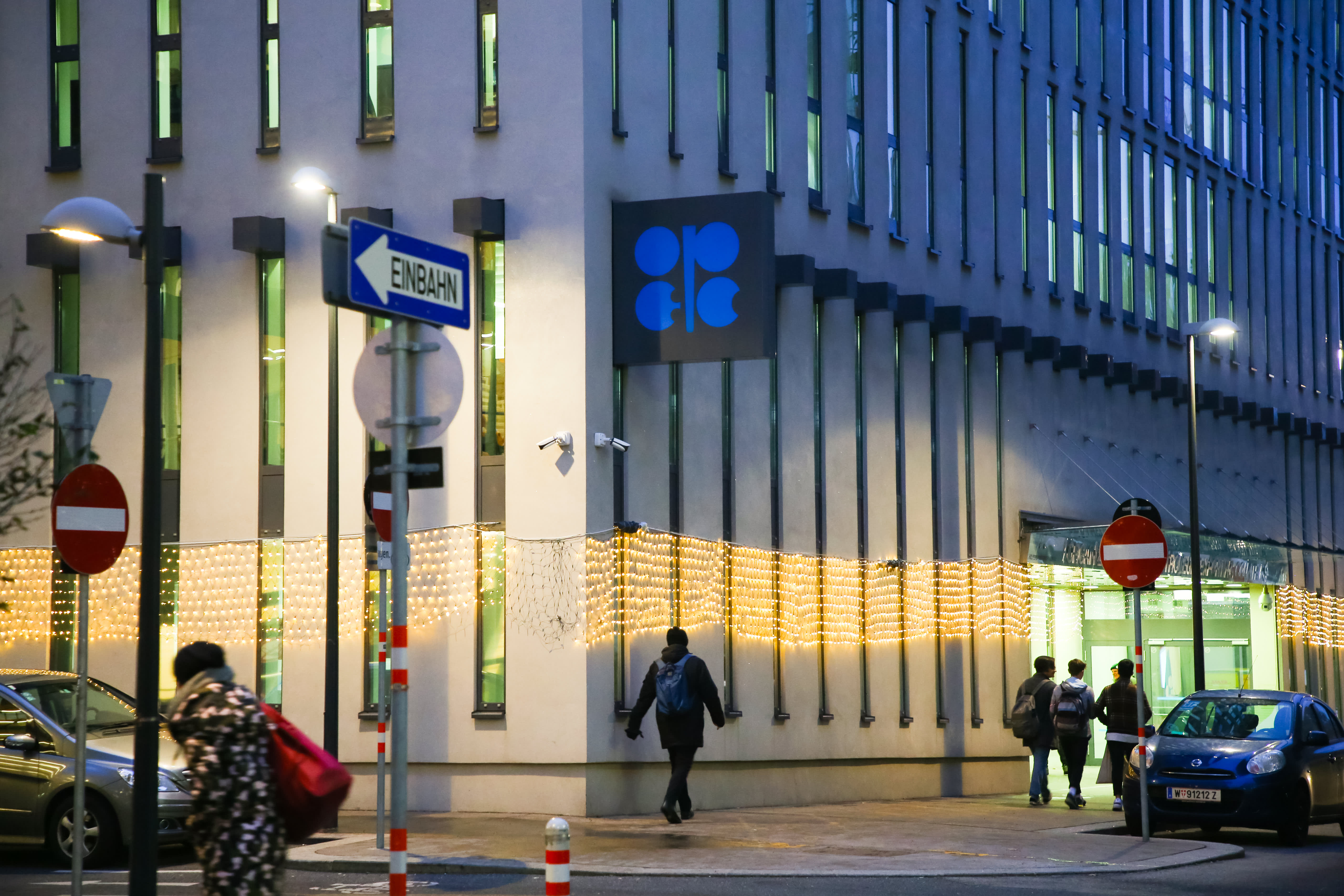OPEC and allies expected to increase oil output despite concerns over return of Iranian crude

The Headquarters of the Organisation of the Petroleum Exporting Countries (OPEC) in Vienna, Austria on 17 December, 2018.
Beata Zawrzel | NurPhoto | Getty Images
LONDON — A group of some of the world’s most powerful oil producers will likely agree to continue increasing their output at a meeting on Tuesday, analysts say, as oil prices climb amid growing optimism over the fuel demand outlook.
OPEC and its non-OPEC partners, an alliance often referred to as OPEC+, will meet via videoconference to discuss the next phase of production policy.
It comes as the Middle East-dominated group, which is responsible for over one-third of global oil production, seeks to balance an expected upswing in demand with the potential for an increase in Iranian output.
OPEC+ announced massive crude production cuts in 2020 in an effort to support prices when the coronavirus pandemic coincided with a historic demand shock.
In April, the group opted to return 2.1 million barrels per day of supply back to the market over the May to July period, reflecting an optimistic outlook for improved mobility despite ongoing concerns about Covid worldwide.
OPEC+ is expected to reiterate this decision to gradually increase output during this week’s meeting.
“I think the event itself is going to be a non-event. We expect them to basically re-confirm the plan that they laid out on April 1,” Jeffrey Currie, global head of commodities research at Goldman Sachs, told CNBC’s “Street Signs Europe” on Tuesday. “I think the bigger issue underlying this is: How are they going to deal with Iran?”
Iran is currently in discussion with six world powers to revive its 2015 nuclear deal. The restoration of a deal could lead to more oil on the global market in the coming months.
“It’s too early to give specific numbers around Iran … So, I think the best you can hope for in terms of how they are going to deal with Iran is the indication that they are willing to offset any increases in Iran. That could be the positive upside surprise coming out of this meeting,” Currie added.
The flag of Iran is seen in front of the building of the International Atomic Energy Agency (IAEA) Headquarters ahead of a press conference by Rafael Grossi, Director General of the IAEA, about the agency’s monitoring of Iran’s nuclear energy program on May 24, 2021 in Vienna, Austria.
Michael Gruber | Getty Images News | Getty Images
OPEC Secretary-General Mohammad Barkindo on Monday said in a statement that he did not believe higher Iranian supply would be a cause for concern.
“We anticipate that the expected return of Iranian production and exports to the global market will occur in an orderly and transparent fashion,” Barkindo said.
International benchmark Brent crude futures traded at $70.75 a barrel on Tuesday morning in London, up around 2%, while West Texas Intermediate crude futures stood at $68.11, more than 2.7% higher from Friday’s close — with no settlement price on Monday due to a U.S. public holiday.
Oil prices have climbed more than 30% since the start of the year.
Iran likely to act ‘constructively’
“I think everybody is expecting Iran to add a lot of volume. So, beyond the July increase, they aren’t likely to come out with any commitment,” Amrita Sen, chief oil analyst at Energy Aspects, told CNBC’s “Squawk Box Europe” on Tuesday.
“We know that as demand rises, we will need more OPEC barrels, but I think Iran is going to be the big question mark for them,” Sen said.
OPEC+ initially agreed to cut oil production by a record of 9.7 million barrels per day last year as global fuel demand collapsed, before easing cuts to 7.7 million and eventually 7.2 million from January. As of July, the group’s production cuts are on track to stand at 5.8 million.
“The most consequential issue for OPEC+ over the short term relates to the potential rise of Iranian production as a result of the US and Iran returning to JCPOA compliance,” analysts at Eurasia Group said in a research note, referring to the acronym for the nuclear deal: the Joint Comprehensive Plan of Action.
Analysts at the risk consultancy said it believed progress in successive rounds of talks made a return to the deal likely in the third quarter of 2021.
“Over the medium term, OPEC+ will most likely adjust its policy to prevent the addition of Iranian barrels from derailing its market balancing strategy,” they continued. “Saudi Arabia will likely lean on Russia to better understand the scope of Iranian policy to work on adjustment plans. Iran would also probably act constructively as higher oil prices serve its own interests.”




